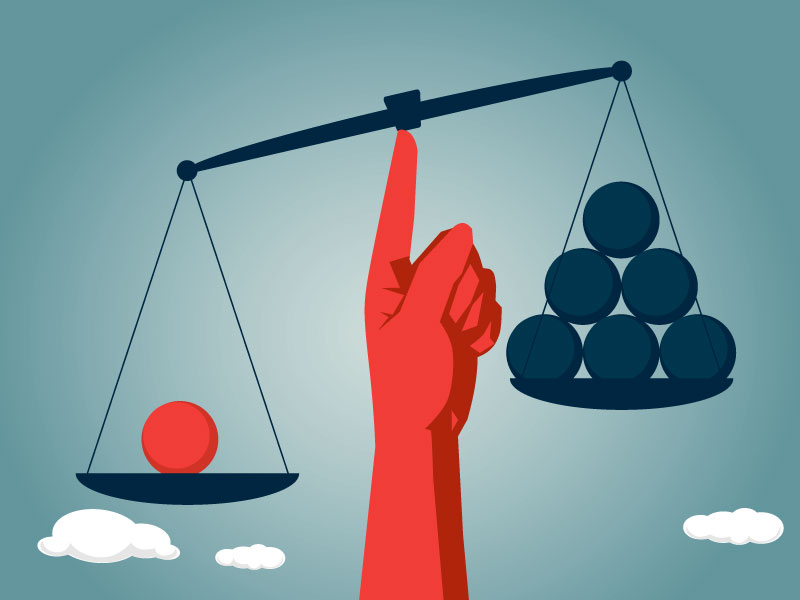
Income inequality declined to its lowest level on record in the third quarter of 2021, according to new data from Statistics Canada.
Disposable income increased more for lower-income households than it did for higher-income households in the third quarter, StatsCan reported. The gap between the top 40% and bottom 40% of households (by share of disposable income) narrowed to its lowest point ever.
Higher wages were the primary driver of increased disposable income in Q3, StatsCan said.
In addition to stronger wage growth, lower-income households also recorded greater employment gains as pandemic-driven restrictions were lifted. This boosted job opportunities in low-wage sectors, such as restaurants, recreation and hospitality.
StatsCan noted that self-employment income also jumped for low-income households, rising 90.1% in Q3, compared with 10.5% for high-income households.
Again, the reopening of certain sectors helped boost self-employment income, particularly in services industries. Seasonal factors also played a role, StatsCan said, as most farmers harvest their crops in Q3.
Combined, these factors benefited lower-income households more than higher-income households, with the disposable income rising 17.5% for the lowest-income households, compared with 3.9% for those at the top of the distribution.
With incomes rising, and outpacing spending, savings also improved for all but the top 20% of earners, StatsCan reported.
“Growth in average net saving was the strongest for middle-income households, who more than doubled their net saving in the third quarter of 2021,” the agency said.
In a separate release, StatsCan also reported that less wealthy households have managed to hold onto the gains they’ve made throughout the pandemic.
The gap between wealthiest 20% and the bottom 40% of households have narrowed over the past couple of years. And that trend continued in the third quarter, as poorer households managed to reduce their debts in Q3.
Yet, despite the gains made by poorer households, the top 20% still control 67.1% of all net worth in Canada, compared to just 2.8% for the bottom 40% of households.
The bottom 40% average $48,000 in financial assets and $94,900 in real estate, StatsCan said, compared with an average of $2.1 million in financial assets and $1.3 million in real estate for the top 20%.
Overall, household wealth was up by $292 billion from the previous quarter to $15.1 trillion in Q3.
The gains in overall net worth continue to be driven by younger households — particularly those who’ve enjoyed rising real estate values.
“Since the start of the pandemic, more than 80% of the growth in net worth for the youngest age group was due to gains in the value of their real estate,” StatsCan said.
Household leverage, as measured by the debt-to-asset ratio, remained stable in the third quarter, StatsCan said, as increased debt loads were matched by rising asset values.